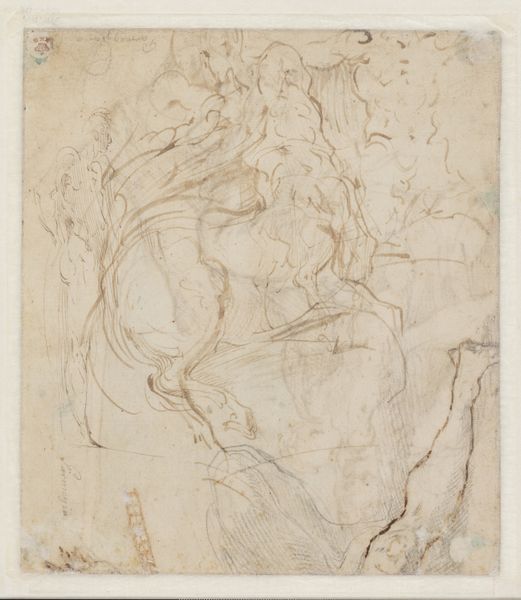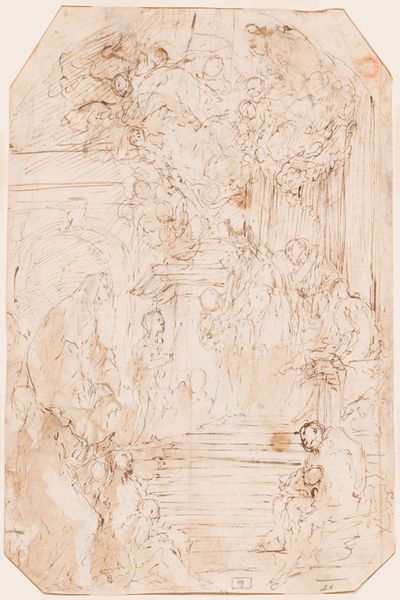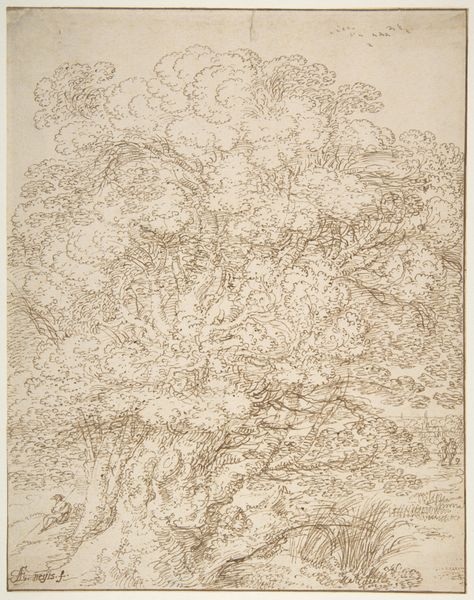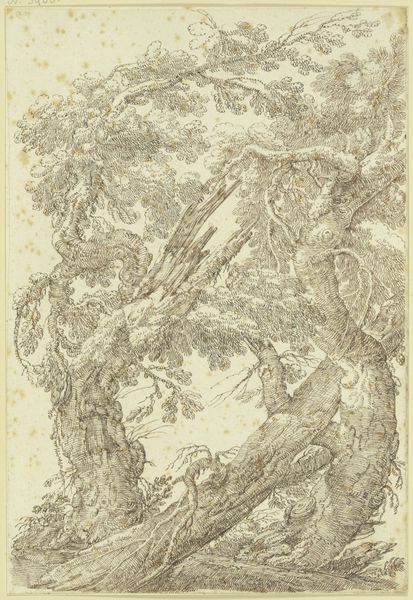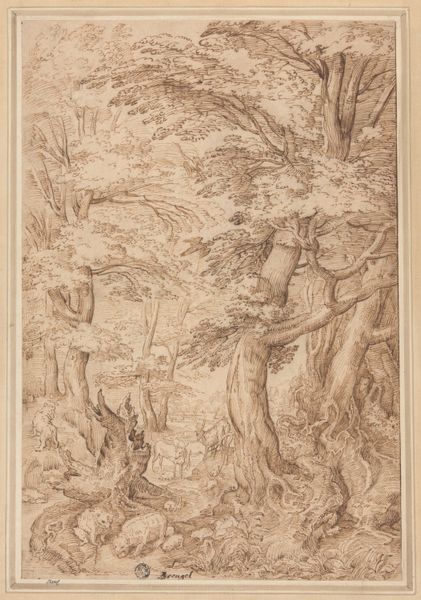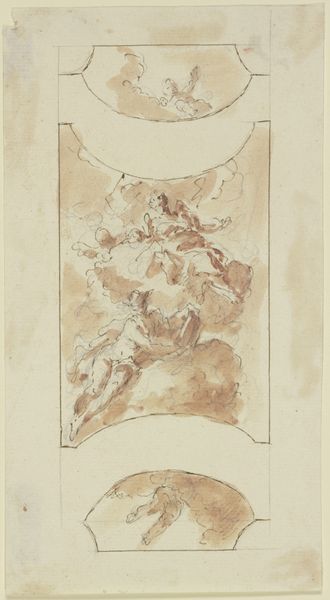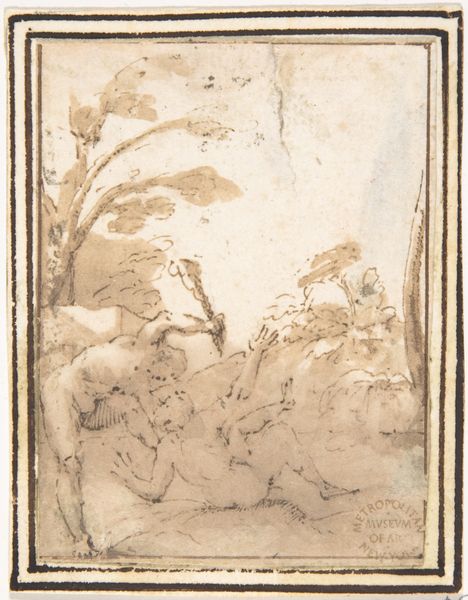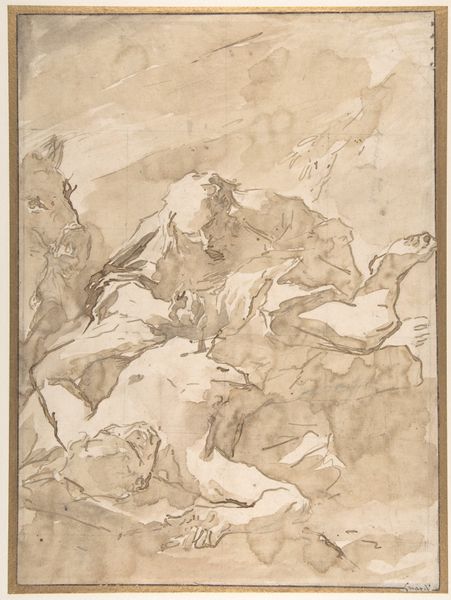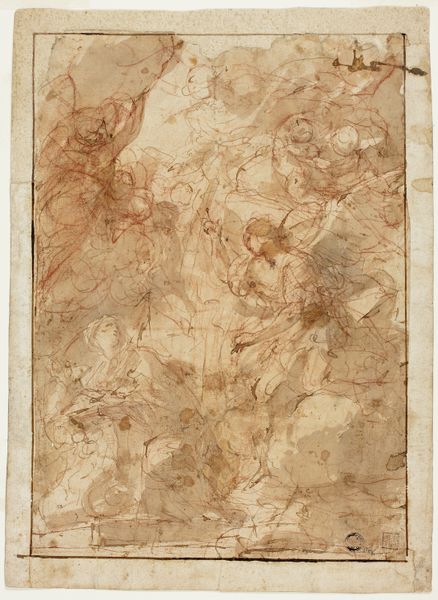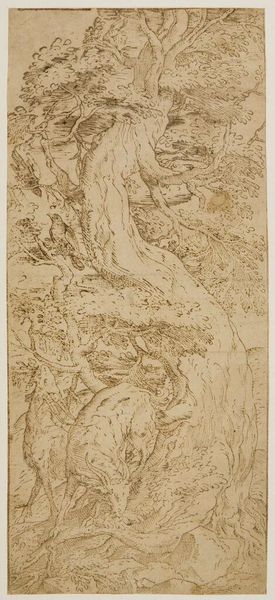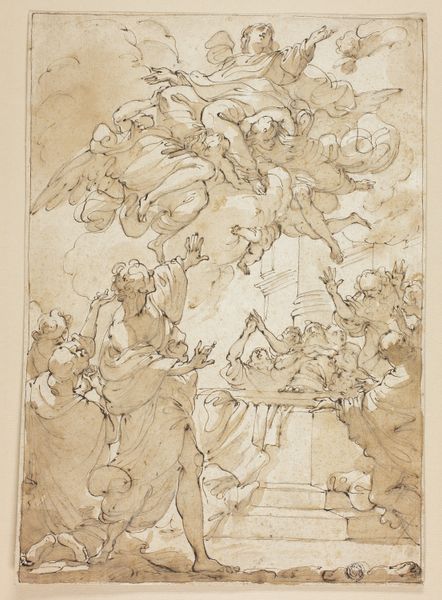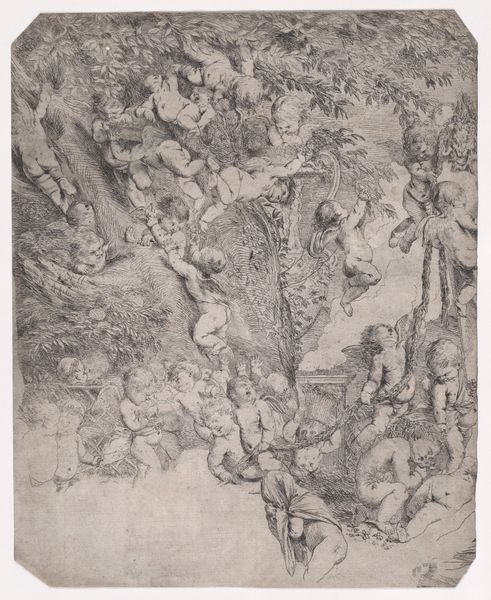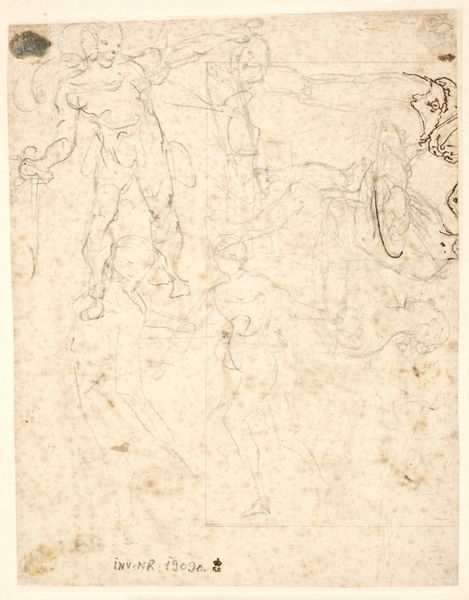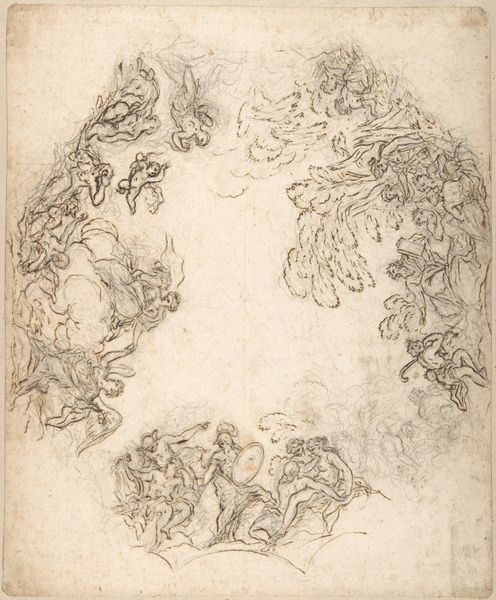
drawing, print, ink
#
drawing
#
allegory
#
baroque
#
ink painting
# print
#
figuration
#
ink
#
history-painting
Dimensions: Sheet: 8 1/8 in. × 5 in. (20.7 × 12.7 cm) Mount: 8 7/16 × 5 1/4 in. (21.4 × 13.4 cm)
Copyright: Public Domain
Curator: This drawing, attributed to Jan Thomas and created between 1637 and 1678, is called "Putti in Clouds, Supporting a Globe." It's rendered in ink. Editor: It's surprisingly dynamic! The composition is dominated by this cascade of figures seemingly in freefall, or rather, a supported plummet through the heavens. Curator: Yes, and the use of ink—the layered washes—really contributes to the sense of ethereal movement and weightlessness of the cherubic figures. There’s a baroque dynamism at play here. These weren’t merely sketches, but often preparatory designs intended to demonstrate ideas and compositions for larger projects such as engravings. Think of this labor towards larger reproductive projects. Editor: It’s definitely not weightless for these putti! It’s interesting to think of this in terms of global power, maybe a kind of propagandistic reach, right? What do you make of the cherub blowing the horn? Is this celebrating a kind of colonial or religious triumphalism? Curator: Certainly, allegorical paintings like these had a strong social function, reinforcing societal values and political ideologies. We could consider that Jan Thomas, trained with Rubens, understood and employed the expectations from art patrons of his time. These are works that often masked power structures within religious or mythological narrative. It emphasizes the divine support of worldly authority. Editor: The vulnerability is apparent, though. All that plump, exposed flesh seems to make these figures incredibly precarious. What if one little angel loses their grip? The world could come crashing down, right? Is this a warning? The world is not in entirely secure hands? Or am I simply being cynical? Curator: Not at all! Consider how the production of these allegorical works were often collaborations in workshops involving numerous artists, each with distinct specialties from drawing the figures to background detailing, to those actually trained in the print-making of the copper plates involved. These processes themselves reflect the hierarchical system represented within the artwork. Editor: It leaves me pondering about the relationship between heaven and earth, labor and reward. The skill involved speaks volumes about how these narratives were perpetuated visually. Thanks for guiding us. Curator: It really illuminates not only artistry but how artistic practices reflect broader societal values, wouldn't you agree?
Comments
No comments
Be the first to comment and join the conversation on the ultimate creative platform.
